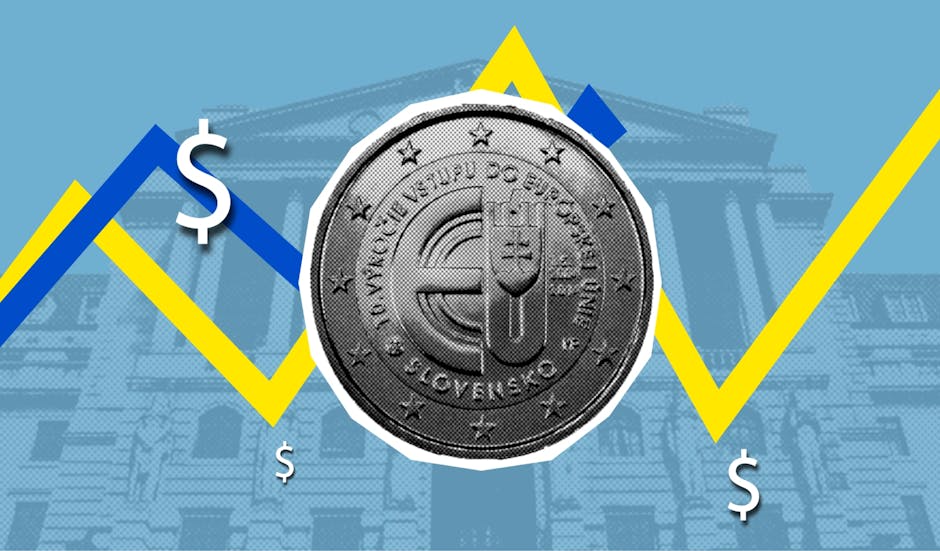Agile Development in Sweat Equity Partnerships: Embracing Flexibility
As you navigate a sweat equity partnership, embracing flexibility is essential to success. You’ll need to adapt to changing requirements, prioritise features, and respond to shifting stakeholder needs. Agile principles facilitate open communication, active listening, and continuous feedback, ensuring partner buy-in and a shared vision. By embracing change, you’ll mitigate risks, capitalise on opportunities, and optimise project trajectory. You’ll learn to prioritise, iterate, and refine, driving project success. And as you continue on this journey, you’ll discover the importance of transparency, trust, and stakeholder management in agile development, leading you to a path of continuous improvement and delivery.
Key Takeaways
• Agile development in sweat equity partnerships requires embracing flexibility to adapt to changing project requirements and stakeholder needs.• Shared understanding of project goals and values is essential for partner buy-in and a collaborative environment in agile development.• Iterative development breaks down complex projects into manageable chunks, allowing for adaptation to changing requirements in sweat equity partnerships.• Effective risk management involves identifying potential roadblocks and developing contingency plans to mitigate risks in agile development.• Transparency, trust, and stakeholder management are crucial in agile development to establish trust with stakeholders and keep them informed about project progress.
Agile Principles in Partnership

When you partner with others, you’ll find that agile principles help create a shared understanding of project goals and values. This shared understanding is essential in ensuring everyone is on the same page, working towards a common objective.
By embracing agile principles, you’ll experience increased partner buy-in, which is vital for the success of your project.
When partners are invested in the project’s goals and values, they’re more likely to be motivated and committed to its success. This, in turn, fosters a collaborative environment where everyone is working together seamlessly.
A shared vision is born when partners are alined on project objectives, and this shared vision becomes the driving force behind your project’s progress.
As you work together, you’ll find that agile principles facilitate open communication, active listening, and continuous feedback.
This iterative approach enables you to refine your project’s goals and values, ensuring they remain relevant and alined with your partners’ expectations.
Embracing Change in Uncertain Times

As you navigate the complexities of modern projects, you’ll inevitably face unexpected twists and turns that require you to adapt quickly. In today’s fast-paced and ever-changing environment, embracing change is no longer a choice, but a necessity.
To thrive in uncertain times, you need to cultivate an adaptive mindset that allows you to pivot when circumstances shift.
In sweat equity partnerships, embracing change is vital to mitigate risks and capitalise on opportunities. Effective risk management involves identifying potential roadblocks and developing contingency plans to address them.
By doing so, you can reduce the likelihood of project derailment and maintain that your partnership remains agile and responsive to changing circumstances.
To develop an adaptive mindset, focus on building a culture that encourages experimentation, learning, and continuous improvement.
Encourage open communication, empower team members to take calculated risks, and celebrate failures as opportunities for growth.
Iterative Development in Practise

In iterative development, you break down complex projects into manageable chunks, tackling each one in a series of cycles that repeatedly build upon and refine previous work. This approach allows you to adapt to changing requirements and deliver working software in short iterations. Each cycle, you’ll prioritise features, develop, test, and refine, guaranteeing that the project stays on track.
To effectively implement iterative development, you’ll need to prioritise features using strategies like MoSCoW prioritisation or Kano model. This confirms that you’re focussing on the most valuable features first, delivering the highest ROI.
| Iteration | Prioritisation Strategy | Code Refactoring |
|---|---|---|
| 1 | MoSCoW | Refactor database queries for improved performance |
| 2 | Kano model | Simplify code structure for better maintainability |
| 3 | MoSCoW | Optimise algorithm for reduced latency |
| 4 | Kano model | Remove technical debt by refactoring legacy code |
| 5 | MoSCoW | Improve code readability with consistent naming conventions |
Flexibility in Decision Making

Embracing flexibility in decision making empowers you to navigate the twists and turns of your project’s journey, where adapting to changing requirements and priorities is essential for delivering a successful outcome.
As you navigate the complex landscape of your sweat equity partnership, flexibility in decision making becomes a pivotal component of your adaptive governance strategy. By embracing flexibility, you’re able to respond to shifting stakeholder needs, adjust to new information, and pivot when necessary.
Strategic pivoting is essential in agile development, as it allows you to re-evaluate and adjust your approach in response to changing circumstances.
This iterative process enables you to refine your strategy, reallocate resources, and optimise your project’s trajectory. By doing so, you can minimise risks, maximise opportunities, and confirm that your project remains alined with its core objectives.
As you make decisions, remember that flexibility isn’t about being indecisive or wishy-washy; it’s about being intentional and responsive to the dynamic nature of your project.
Rapid Response to Shifting Needs

Rapidly responding to shifting needs enables you to swiftly adjust your project’s trajectory, keeping your team alined with evolving stakeholder requirements and priorities. This flexibility is vital in agile development, as it allows you to incorporate changing priorities and needs into your project plan. By doing so, you can confirm that your project remains relevant and valuable to stakeholders.
To achieve this, you’ll need to employ effective adaptation strategies. This may involve revising priorities, adjusting timelines, or reallocating resources. By being responsive to shifting needs, you can minimise the risk of project scope creep and confirm that your team remains focussed on delivering value to stakeholders.
Here’s an example of how adaptation strategies can be applied in different scenarios:
| Scenario | Adaptation Strategy | Outcome |
|---|---|---|
| Changing stakeholder priorities | Re-prioritise tasks, adjust resource allocation | Aline project with new priorities |
| Emerging technology | Integrate new technology, revise project timeline | Stay ahead of the curve |
| Unforeseen obstacles | Re-route resources, adjust project scope | Mitigate risk, maintain progress |
| Shift in market demand | Re-aline project goals, revise deliverables | Meet changing market needs |
| Team member departure | Re-assign tasks, adjust project timeline | Minimise disruption, maintain continuity |
Building Trust Through Transparency

By fostering an open and honest environment, you can build trust with stakeholders by keeping them informed about project progress, timelines, and challenges. Transparency is key to establishing a strong foundation of trust, and it’s especially vital in agile development projects where adaptability is paramount.
When stakeholders are informed, they’re more likely to be understanding and supportive when changes arise.
Open communication is essential in building trust. Share project updates, milestones, and obstacles with stakeholders regularly. This can be achieved through regular meetings, progress reports, or even an online project management tool.
By doing so, you’ll create a sense of shared ownership and accountability, which can lead to stronger relationships and better collaboration.
In an agile development project, shared goals are critical to success. When everyone is on the same page, working towards a common objective, you can overcome obstacles and adapt to changes more efficiently.
Continuous Improvement Strategies

As you navigate the agile development landscape, you’ll find that continuous improvement is an essential component of driving project success, and it’s up to you to cultivate a mindset that welcomes ongoing refinement and adaptation.
This mindset is critical in sweat equity partnerships, where flexibility and adaptability are key to overcoming obstacles and delivering value.
To foster a culture of continuous improvement, you should prioritise retrospective analysis.
This involves regularly reflecting on past experiences, identifying areas for improvement, and implementing changes to optimise processes and outcomes.
By conducting retrospectives, you’ll uncover opportunities to streamline workflows, enhance collaboration, and refine your approach to agile development.
Knowledge sharing is another essential aspect of continuous improvement.
As you work with your sweat equity partners, make sure to share lessons learnt, best practises, and innovative solutions.
This knowledge exchange will help you stay ahead of the curve, leverage each other’s expertise, and co-create value.
Delivering Value in Dynamic Environments

As you navigate the complexities of agile development, you’re constantly seeking ways to deliver value in dynamic environments.
That’s where rapid adaptation strategies come into play, enabling you to respond swiftly to changing requirements and priorities.
Rapid Adaptation Strategies
You face the ultimate test of agile development when dynamic environments demand rapid adaptation strategies that deliver value despite uncertainty and constant change. To stay ahead, you need to develop strategies that help you respond quickly to shifting requirements. This is where risk assessment and tech surveillance come into play.
| Rapid Adaptation Strategy | Description | Benefits |
|---|---|---|
| Prioritised Backlog | Prioritise features based on business value and risk | Guarantees focus on high-impact features |
| Continuous Integration | Automate testing and integration to reduce errors | Reduces bugs and improves quality |
| Customer Feedback Loop | Regularly gather feedback to refine the product | Improves customer satisfaction |
| Cross-Functional Teams | Collaborative teams with diverse skills | Enhances creativity and problem-solving |
| Real-Time Monitoring | Track key metrics to identify areas for improvement | Data-driven decision-making |
Embracing Change Culture
To thrive in dynamic environments, your organisation must foster a culture that not only accepts change but actively seeks it out, recognising that embracing uncertainty is key to delivering value in today’s fast-paced markets.
This cultural shift requires a mindset that views change as an opportunity, not a threat. As a leader, you play a vital role in cultivating this mindset within your team.
Identify and empower Change Agents who can drive this cultural transformation from within.
These individuals will help facilitate open communication, encouraging team members to share their concerns and ideas about the changing landscape.
By doing so, you’ll create a safe space for experimentation and learning, where failures are seen as valuable lessons rather than setbacks.
As you navigate the complexities of dynamic environments, remember that embracing change is an ongoing process.
To remain adaptable, responsive, and open to new ideas and perspectives is vital.
Conclusion
As you navigate sweat equity partnerships, remember that agility is key.
Embrace change, and adapt to shifting needs.
Break down barriers, and build trust through transparency.
Iterate, improve, and deliver value in dynamic environments.
Stay flexible, respond rapidly, and make informed decisions.
By doing so, you’ll thrive in uncertainty, and your partnerships will flourish.
Contact us to discuss our services now!
